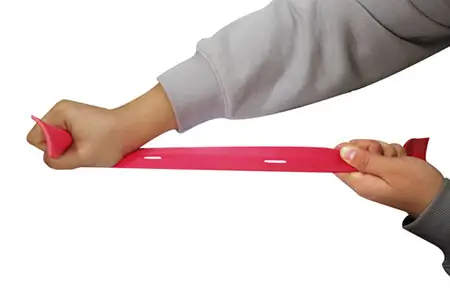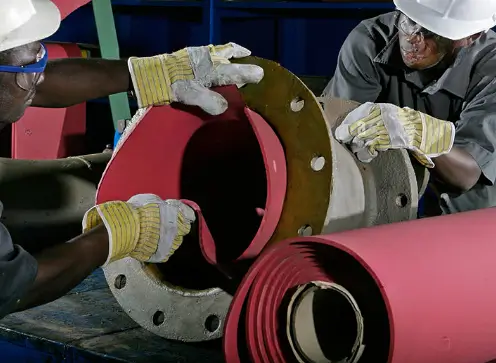Wodurch wird die Reißfestigkeit von Gummiplatten beeinflusst?

Bei der Verwendung von Gummimaterialien ist häufig nicht nur eine ausreichende Verschleißfestigkeit, sondern auch eine ausgezeichnete Reißfestigkeit erforderlich. Eine gute Reißfestigkeit stellt sicher, dass sich der Gummi nach plötzlichem, intensivem Reißen erholen kann, ohne durch Risse unbrauchbar zu werden. Welche Faktoren beeinflussen also die Reißfestigkeit von Gummi, während seine Verschleißfestigkeit erhalten bleibt?
- Art der Gummimatrix: Verschiedene Gummiarten wie Naturkautschuk (NR), Styrol-Butadien-Kautschuk (SBR) oder Nitrilkautschuk (NBR) weisen unterschiedliche Reißfestigkeitseigenschaften auf. Die Molekularstruktur von Naturkautschuk ist einzigartig; seine langkettige Struktur sorgt für hohe Elastizität und Zähigkeit und bietet eine ausgezeichnete Reißfestigkeit. Die verschleißfesten Naturkautschukplatten von DEF Rubber mit einem Naturkautschukanteil von über 95% und einer einzigartigen Verarbeitungstechnik behalten die langkettige Molekularstruktur von Naturkautschuk bei und weisen daher im Vergleich zu ähnlichen Produkten eine überlegene Verschleiß- und Reißfestigkeit auf.
- Arten und Mengen von Füllstoffen: Füllstoffe wie Ruß oder Kieselsäure können die Reißfestigkeit von Gummi verändern. Ruß, ein häufiger Füllstoff in Gummimischungen, verändert die Wechselwirkungen zwischen Gummimolekülen und seine Steifigkeit und beeinflusst dadurch Eigenschaften wie Verschleiß- und Reißfestigkeit.
- Vernetzungsdichte zwischen Kautschukmolekülen: Das während des Vulkanisationsprozesses gebildete vernetzte Netzwerk ist einer der Schlüsselfaktoren, die die Reißfestigkeit beeinflussen. Die Vernetzungsdichte beeinflusst die Elastizität und Zähigkeit des Gummis. Eine angemessene Vernetzungsdichte erhöht die Reißfestigkeit, während eine übermäßige Vernetzung zu sprödem Gummi führen kann, was die Reißfestigkeit verringert.
- Produktions- und Verarbeitungstechniken: Eine präzise Kontrolle von Temperatur und Druck während der Produktion und Verarbeitung trägt dazu bei, die Gleichmäßigkeit der inneren Struktur des Gummis aufrechtzuerhalten. Auch die Formtechnologie wirkt sich direkt auf die innere Struktur des Gummis aus. Ungleichmäßige Produktions- oder Formprozesse können zu Spannungskonzentrationen im Inneren des Gummis führen, wodurch dieser bei äußeren Einflüssen anfällig für Risse wird.
- Alterung und Umwelteinflüsse: UV-Licht, Ozon, Chemikalien und Temperaturschwankungen wirken sich auf die Reißfestigkeit von Gummi aus. Längerer Kontakt mit diesen Bedingungen kann zu Alterung führen, die innere Molekularstruktur und -zusammensetzung verändern und zu einer Verschlechterung der physikalischen Eigenschaften führen. Der umsichtige Einsatz von Alterungsschutzmitteln kann diesen negativen Auswirkungen bis zu einem gewissen Grad vorbeugen. Auch die Umgebungstemperatur beeinflusst die Reißfestigkeit; extrem hohe oder niedrige Temperaturen können die Härte des Gummis und damit seine Reißfestigkeit verändern.
- Einsatz von Weichmachern und Plastifiziermitteln: Weiche Gummimischungen weisen normalerweise eine bessere Reißfestigkeit auf. Die Zugabe von Weichmachern und Plastifizierern erhöht die Flexibilität des Gummis und verbessert dadurch seine Reißfestigkeit. Eine übermäßige Zugabe kann jedoch die Festigkeit des Gummis verringern und seine Gesamtleistung beeinträchtigen.
Zusammenfassend lässt sich sagen, dass die Reißfestigkeit von Gummiplatten durch eine Kombination aus Materialzusammensetzung, Verarbeitungstechniken und Umweltfaktoren bestimmt wird. Durch die Optimierung dieser Elemente kann die Reißfestigkeit von Gummiprodukten effektiv verbessert werden. Wenn Sie noch Fragen oder Unsicherheiten haben, zögern Sie nicht, sich an den Experten für verschleißfestes Gummi bei DEF Rubber.






